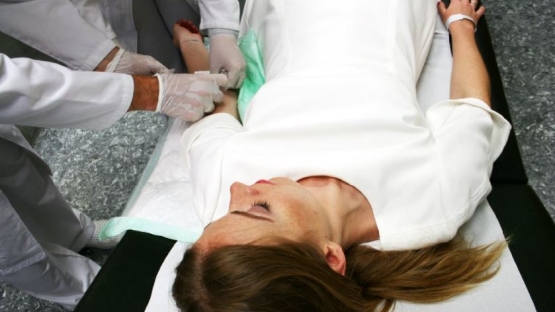The Swedish Radiation Safety Authority's new web tool, DosReg, will aid health and medical services in optimising their radiological examinations. The medical care sector is under a regulatory requirement to optimise examination methods to keep radiation doses as low as reasonably achievable.
Radiation doses in the medical care sector must be kept as low as possible, though without sacrificing the diagnostic information from imaging. Since 2002, the Swedish Radiation Safety Authority has required health and medical services to measure and report diagnostic standard doses (DSD). This data is used as a basis for determining diagnostic reference levels (DRL). The system has effectively averted radiation doses to the population. However, this approach has been resource-intensive on the part of medical care and the Authority alike.
This led to the Swedish Radiation Safety Authority's development of the DosReg web tool. Its primary purposes are not only to render the process more efficient, from collection of data to analysis and determination of new or revised reference levels, but also to compile input for estimates of radiation dose to the population.
"When we have the task of determining new reference levels next year, we will use data from DosReg. This saves the Authority time and resources," says Stefan Thunberg, an inspector at the Swedish Radiation Safety Authority.
Users in the medical care sector will also see advantages thanks to DosReg compared to the previous approach. The tool will facilitate optimisation work.
"They get feedback in real time on the level of standard doses reported by them in relation to the reference levels. This also enables them to compare with other clinics that perform the same kind of examination, while also giving them access to their protocols and data on standard doses. DosReg assists them in the process of optimisation," says Mr Thunberg.
The objective is to have DosReg available for six modalities in 2017: computed tomography, nuclear medicine, mammography, conventional X-ray, interventional procedures, and dental CBCT. To date, five of the six modalities are ready: computed tomography, nuclear medicine, CBCT, mammography, and interventional procedures. In 2017, DSD data will be compiled to serve as a basis for the new DRL, which are scheduled for implementation in 2018.
In connection with the National Radiology Conference 2017, held 12-15 September in Linköping, the Swedish Radiation Safety Authority will raise the participants' awareness of DosReg and its advantages. This will be done in the form of talks and in-stand demonstrations of the software.


